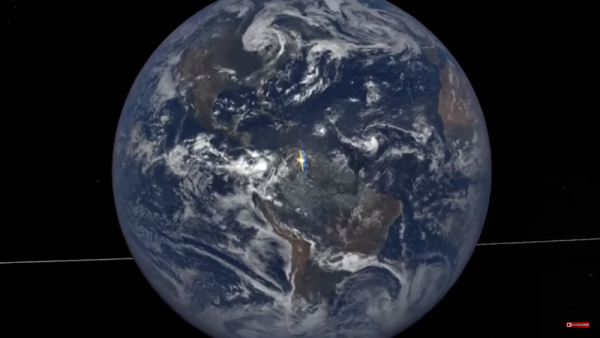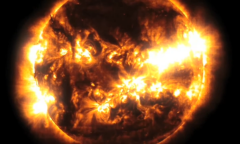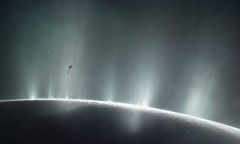By KM Diaz, | May 17, 2017

The Earth Polychromatic Imaging Camera (EPIC) from NASA captures photos of our once every hour, in which some of the shots appear to have strange flashes. (YouTube)
The Deep Space Climate Observatory (DSCOVR) satellite has been floating between the Sun and the Earth since June 2015. On that satellite, the Earth Polychromatic Imaging Camera (EPIC) from NASA captures photos of our planet once every hour, in which some of the shots appear to have strange flashes. Now, NASA seems to decode what causes these strange flashes.
Like Us on Facebook
Prior theories have stated that these strange flashes came from radiation of secret laboratories, flashes of weather phenomenon, or a beam of gold from a lost city. However, researchers from NASA view these flashes differently, in which 866 were captured during the launch of DSCOVR and in August 2016. These are ice crystals, hovering horizontally five miles in the air.
Researchers previously thought that these flashes are sunlight bouncing off bodies of water with flashes above. But upon closer examination, they also observed flashes in the land and their sizes are too large to assume that there is a presence of lake or other bodies of water. And so, they come up to the conclusion that these are ice crystals.
To further elaborate the theory, researchers reasoned that if the flashes are due to the sunlight, the shots could have been taken when DSCOVR was in the position in front of the sun to hit the crystals causing for its reflection in the photos. The theory did really match with the data, the flashes are caused by reflection, not because of weather phenomenon.
After that, they outlined the extent of the particles with the use of two channels on the EPIC instruments to measure the height of clouds. When flashes occur, cirrus clouds are also present from three to five miles (5-8 km) high.
Carl Sagan, an astronomer, also noticed these strange flashes in 1993 after observing the images from the Galileo spacecraft. Large areas of coastlines and blue oceans are present, that's why the captured images reflected on the ocean not on land, according to Sagan and his colleagues.
The next step for astronomers is to classify how ice crystals affect the atmosphere, how common they really are, and their impact on Earth when blocking the sunlight.
-
Use of Coronavirus Pandemic Drones Raises Privacy Concerns: Drones Spread Fear, Local Officials Say

-
Coronavirus Hampers The Delivery Of Lockheed Martin F-35 Stealth Fighters For 2020

-
Instagram Speeds Up Plans to Add Account Memorialization Feature Due to COVID-19 Deaths

-
NASA: Perseverance Plans to Bring 'Mars Rock' to Earth in 2031

-
600 Dead And 3,000 In The Hospital as Iranians Believed Drinking High-Concentrations of Alcohol Can Cure The Coronavirus

-
600 Dead And 3,000 In The Hospital as Iranians Believed Drinking High-Concentrations of Alcohol Can Cure The Coronavirus

-
COVID-19: Doctors, Nurses Use Virtual Reality to Learn New Skills in Treating Coronavirus Patients










